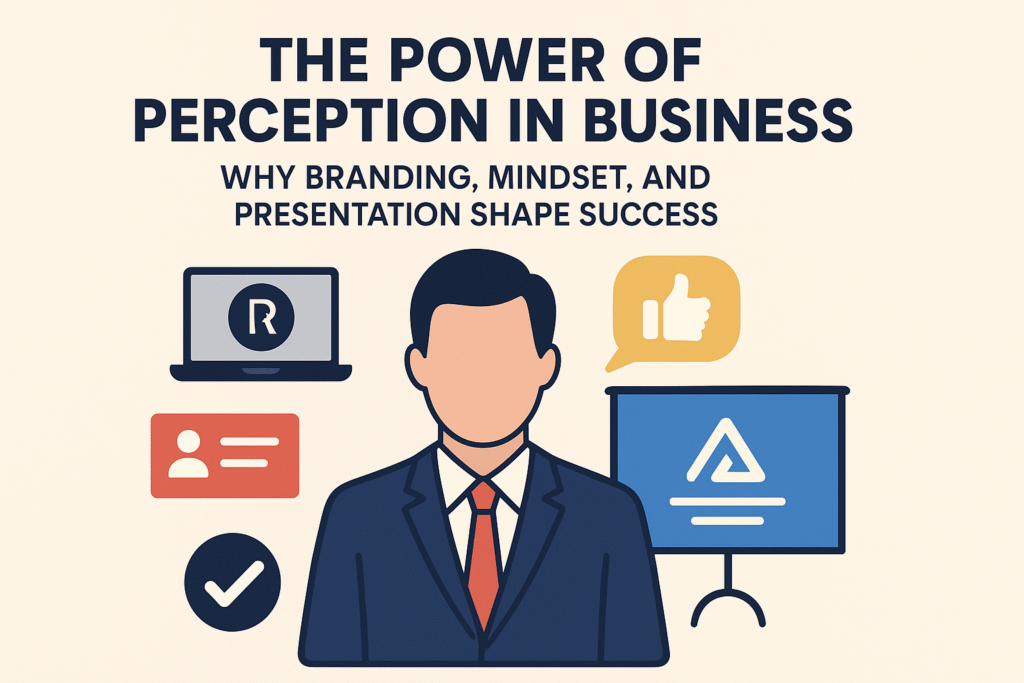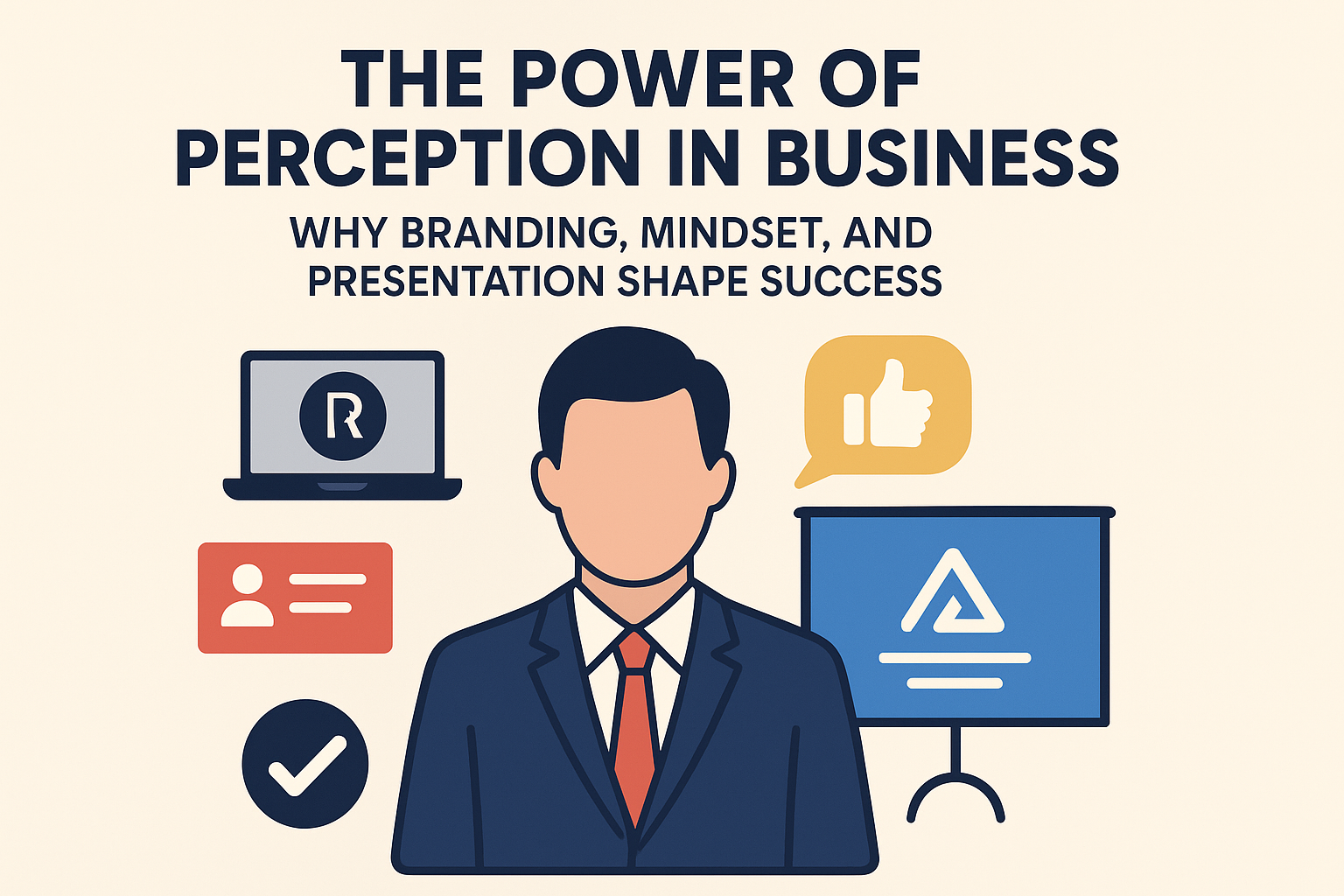How To Improve On The Power Of Perception In Business
In today’s competitive marketplace—especially in Nigeria, where customers choose from many alternatives—the way your business is perceived directly affects its value and growth. How clients see your brand, staff and presentation often determines whether they will trust you, refer you, or pay a premium. This is the practical heart of How To Improve On The Power Of Perception In Business.

Business thinkers have long argued that perception matters as much as product. Josh Kaufman, in The Personal MBA, explains that apparent competence and professionalism shape client decisions. Likewise, sales expert Brian Tracy points out that buyers often choose what they believe is best, not necessarily what is objectively best—so presentation and perceived value count. These ideas anchor practical steps for anyone seeking to master How To Improve On The Power Of Perception In Business.
Perception is not a trick; it is a multiplier. Consider a restaurant: décor, staff uniforms, lighting and service cadence all signal quality and justify higher prices before a single dish is tasted. The same applies across sectors—cleaning services, tech startups, retail or professional services. Understanding How To Improve On The Power Of Perception In Business means intentionally shaping those signals so they work for you, not against you.
Why this matters in Nigeria: many entrepreneurs focus on operational delivery while under-investing in visible cues of professionalism. When you understand How To Improve On The Power Of Perception In Business, you prioritize the elements international or corporate clients look for—clear websites, consistent messaging, professional uniforms and responsive communications—so you open doors that technical competence alone may not. The role of a coherent brand promise is central here. MARTY NEUMEIER
Real-world examples show the payoff. Flutterwave’s rise illustrates how projecting global-ready branding and partnerships (e.g., integration with PayPal) accelerated trust from overseas investors and clients; perception helped convert capability into opportunity. That trajectory is a clear lesson in How To Improve On The Power Of Perception In Business: shape your external signals to match the market you want to win. FlutterwaveReuters
Local success stories are instructive too. Palmacedar Cleaning Limited reframed a traditionally undervalued service through professional branding, staff training, and consistent client-facing practices—transforming “cleaning” into a strategic workplace service and commanding higher fees. This example demonstrates a practical roadmap for entrepreneurs learning How To Improve On The Power Of Perception In Business. palmacedarcleaning.com.ng
How To Improve On The Power Of Perception In Business
Below are focused, actionable steps you can apply immediately to strengthen perception and convert it into measurable value.
- Mindset: Think like a brand, not a one-off service.
Accept that perception is a business asset. When leaders adopt How To Improve On The Power Of Perception In Business as a mindset, their decisions—hiring, procurement, customer care—align to long-term positioning rather than short-term survival. - Create a consistent visual identity.
Logos, fonts, color palettes, invoices, uniforms and your website must tell the same story. Consistency reduces friction and increases trust—core lessons of How To Improve On The Power Of Perception In Business. - Invest in people and presentation.
Your frontline team communicates your brand in every interaction. Train staff on soft skills, ensure professional dress codes, use role titles that convey dignity and expertise, and reward customer-centered behavior. These actions are practical examples of How To Improve On The Power Of Perception In Business. - Build a clean, user-friendly digital presence.
A professional website, up-to-date social profiles, clear service descriptions and case studies are often the first things clients judge. Online credibility is a cornerstone of How To Improve On The Power Of Perception In Business—don’t let outdated web pages or inconsistent social posts sabotage your efforts. BrainyQuote - Tell a strategic story—then deliver it.
Use short case studies, testimonials, before/after visuals and employee spotlights to narrate outcomes. Storytelling makes perception tangible: clients buy the narrative and the promise. This is core to How To Improve On The Power Of Perception In Business. - Price for perceived value, not solely cost.
When you’ve aligned presentation, service and client experience, your pricing must reflect that perceived value. Charging accordingly reinforces the perception you’ve created—this is how How To Improve On The Power Of Perception In Business translates into revenue. - Measure and iterate.
Collect client feedback, monitor referral rates, and compare conversion metrics before and after presentation upgrades. Treat perception as a measurable asset and refine continuously. This data-focused approach is the final step in How To Improve On The Power Of Perception In Business.

In Concluclusion
Perception shapes acceptance, pricing and growth. Entrepreneurs who master the mechanics of visual identity, staff development, digital credibility and storytelling will consistently outcompete those who rely on product alone. If you want to win premium clients or scale beyond local markets, focus on How To Improve On The Power Of Perception In Business—it will repay you with higher margins, stronger partnerships and long-term resilience.
References & Further Reading
- Josh Kaufman — The Personal MBA. Official site: JoshKaufman.net. joshkaufman.net
- Brian Tracy — The Psychology of Selling. (Book listings and summaries). Google Books
- Marty Neumeier — The Brand Gap (branding fundamentals). MARTY NEUMEIER
- Flutterwave — official blog on PayPal integration and press coverage. FlutterwaveReuters
- Palmacedar Cleaning — company site and local case example. palmacedarcleaning.com.ng









































